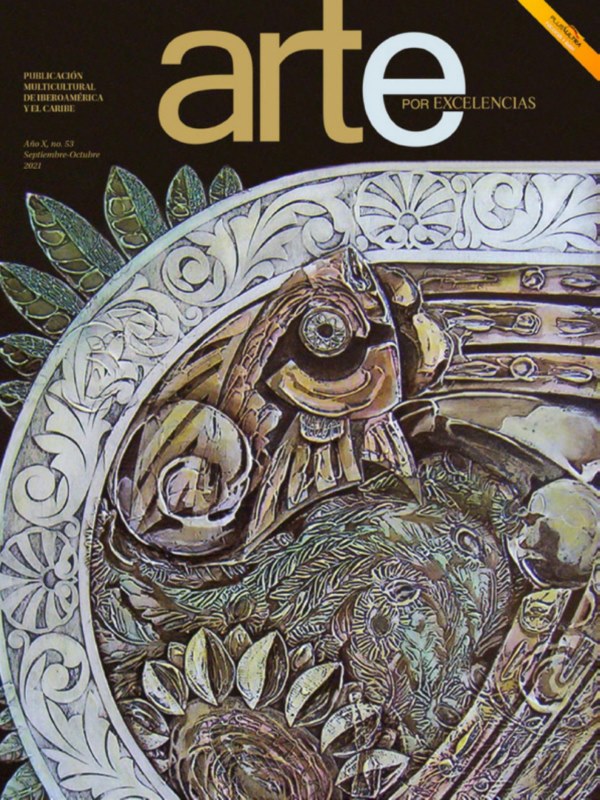 There’s an unlimited dissemination that still corrupts the borders of art and idea upon thinking of the genres, identifying ways of conceiving artistic production. After the journey started by Hans Haacke with lampooning and ironic researches on reality, there are processes on debate that go deep into phenomena related to the ethics and legitimacy of any corrosive approach.
There’s an unlimited dissemination that still corrupts the borders of art and idea upon thinking of the genres, identifying ways of conceiving artistic production. After the journey started by Hans Haacke with lampooning and ironic researches on reality, there are processes on debate that go deep into phenomena related to the ethics and legitimacy of any corrosive approach.
The formal bounds have been apparently solved out. It’s presently all about betting on new approaches that go beyond Beuys’ proposals or many artists’ developed during the Russian avant-gardism. We go back to the post-utopias and also the need for destabilization of institutionalism on moral order.
Chinese art hasn’t remained aloof from events in that nation, nor the human impact as result of the transformation in the great economic empire that was this country. Differences between city and country, hard work in mines, constructive movement of macro-urbanizations, the boost of technological restructuring and complexities included in the role of individuals within a process of social transformation; they are all highly sensitive matters in the personal records of these creators.
China represents the encounter between a thousand-year-old tradition and the abrupt collision of a revolution that tried to definitively destroy the feudal system. Art, although it doesn’t provide models or offer solutions, clear the way when certain stories match the level of imaginaries, without a systematization of its comprehension from sociology or historiography. This is the spirit of Vivir, by Zhang Yimou, which speaks of passions and problems in the Chinese Revolution’s History. Many of these issues have been tackled in different ways through visual arts, in which certain expressive resources such as pop or hyper-realism reappear by also using elements related to irony and cynicism.
Yang Fudong, young artist born in 1971, belongs to a generation that has gone through many commotions in every order: “In China, who has received education can be ambitious, but always finds obstacles: external, including social and historical obstacles, and internal, which are created by ourselves”. However, many art critics believe that Fudong grows apart from pop’s visual aggressiveness and cynicism so as to obtain a language that includes the fineness of poetry. In spite of this affirmation, his statement can’t be absolute; his speech goes through highly relative situations. He’s a man who looks from inside, from an Eastern that belongs to him and directly merges the globalizing power of Western. This position doesn’t stop him from wanting to deeply interrogate the ethical breakaways from his reality. An artwork such as Cyan Kylin, showcased in Guangzhou Triennial, contains an impressive telluric charge. The work contrasts with the title of Forewell to Post-colonialist event’s curatorial proposal. The communicative effect that appeals to a relation of sensitivity is tried to be achieved through spectacular display of the work. For Fudong, the essential isn’t just showing hard work or intervening from the possibility generated by the action site. In this case, it’s all about building a staging that takes us back to the essences of Hayku to generate an effect in us. The tragedy of pain is stated from a beauty that can’t be hidden or simplified, though this term might seem suspicious.
 His objective isn’t displaying a testimonial documentary by reconstructing documentations. His strategy isn’t represented by the distortion of shots in order to alter the frame, without setting author’s rules. The artist creates a different plot, warns us about the language and, afterwards, takes it away. His method isn’t even Eisenstein’s when implementing the attraction staging. Finally, he puts together structures with such scale that the drama is reinforced. The analogy of some of these images with the experimentation carried out by a Russian moviemaker lies on the need to show the importance of what’s meant to be said with the camera, to feel the responsibility of the eye that builds every frame, aware of its implication with viewers; to think of ways to generate a reflexive scene out of the author’s look.
His objective isn’t displaying a testimonial documentary by reconstructing documentations. His strategy isn’t represented by the distortion of shots in order to alter the frame, without setting author’s rules. The artist creates a different plot, warns us about the language and, afterwards, takes it away. His method isn’t even Eisenstein’s when implementing the attraction staging. Finally, he puts together structures with such scale that the drama is reinforced. The analogy of some of these images with the experimentation carried out by a Russian moviemaker lies on the need to show the importance of what’s meant to be said with the camera, to feel the responsibility of the eye that builds every frame, aware of its implication with viewers; to think of ways to generate a reflexive scene out of the author’s look.
Honey, 2003 is one of his essential works. Different characters move through some scenes in a chain of situations in which nothing happens. The ending’s dramatic action is left out, hidden in the series of events presented by the creator. The syntactic structure is based on an environment in which the objectiveness of actions hides a surrealist atmosphere that causes an astonishment sensation. It’s just as if the end of the action turned into a sort of expectant emptiness. The dramatic climax is suppressed. Fudong somehow refers Samuel Beckett’s Absurd Theater, he knows that the denouement of his production is out of frames because it occurs among us: in the press, mass media, daily experiences.
He has an open idea of movies because he doesn’t think of structures from the classic tragedy format or narrative techniques of nineteenth-century literature. He knows how to alter languages, play around with them and transform them into disintegrations of infinite implementations. The script enters into the image and the image comes out of the script. There’s no preponderance in the shot or sequence. The mystery of framing is based on the sequence shot, looking for the field covered by the camera and what’s left out of it. It’s from that spot where the artist finds the newly-formed and the possibility of suggesting the metaphor.
Honey is a baroque film. It can be felt in the vividness of scenes and characters where nobody apparently understands the utility of their actions. Nevertheless, that oversaturation is what makes us think of our world, where everything happens in a simultaneousness that is usually identified as a present moment which is self-reproduced.
Siete intelectuales en un Bosque de Bambúexhibition possesses high conceptual value. Five screens make up the presentation of a material that stands out due to its topologic character. Retaking the legend of Seven Wise Men in a Bambu forest, Fudong creates a simile between the affective time of the myth’s nature itself and the time of his story. This artwork reflects on the role played by intellectuals within a certain historic context. Although many people consider this work an allegory to the outrages of the so called Cultural Revolution during the 1950s and 1960s, I believe that it represents an important analysis on relations between power and the essences of creation, understood as something that goes beyond artistic and literary culture. I’m one of those people who think that the current crisis of Western thinking and its Recits have to do with its obsessive way of understanding the transcendence and application of mind force for superior and abstract powers. In the Eastern, though those contradictions can’t be found in a primary state, there are also debates among the different forces that were in conflict from a philosophical viewpoint. Confucianism was the pragmatism, one of the most instrumental ideas of work. Taoism, walking to our truth, to the real harmony among body, mind and nature. Yang Fudong stands by Taoism, so he represents its energy and freeing strength. The artist wants a present qiqtang. There’s less dialogue in our current societies. Contemporary cities have moved their axis toward the no-places. The transit at human scale disappears in closed condominiums or new contemporary commercial temples that substitute what was once the Roman forum.
 The seven wise men ran away from Confucianism and channeled their creative energies out of the politic space that conditioned the power of Jin dynasty. They needed to walk, as escapists, away from control to live in the core of creation and nature itself, loving music, poetry and pleasures that reveal human flesh, destroying taboos and living the carnality of what’s produced by instincts. Fudong’s seven intellectuals go to the mountain and they later return to the city, where they finally try to reach spiritual fulfillment. There’s no teleological sense in the artist’s mind of trying to find the cause and effect of things. The characters move within the dispersion of their scenes. They need to travel to the depths of their own existence, so they can look around and get to understand the world. The intellectuals acquire a nomadic attitude and their conflicts go beyond the approach of age to comment on present events. Their bet remains on the spiritual recovery against deterioration of human condition.
The seven wise men ran away from Confucianism and channeled their creative energies out of the politic space that conditioned the power of Jin dynasty. They needed to walk, as escapists, away from control to live in the core of creation and nature itself, loving music, poetry and pleasures that reveal human flesh, destroying taboos and living the carnality of what’s produced by instincts. Fudong’s seven intellectuals go to the mountain and they later return to the city, where they finally try to reach spiritual fulfillment. There’s no teleological sense in the artist’s mind of trying to find the cause and effect of things. The characters move within the dispersion of their scenes. They need to travel to the depths of their own existence, so they can look around and get to understand the world. The intellectuals acquire a nomadic attitude and their conflicts go beyond the approach of age to comment on present events. Their bet remains on the spiritual recovery against deterioration of human condition.
Liu Lan,created in 2003, is undoubtedly another of Yang Fudong’s monumental works. The freshness of travelling and soft movement of frames promotes camera displacement and contrast of shots against shots. This artwork explores sensorial feelings: Time goes by in the scenery that marks the course of characters. The music carries the weight of dramatic tension. It all happens as we were making do with the main characters of the movie. A slow down situation is created where narrative times are altered. Past and present converge in a journey marked by the irregular of their horizons. The journey is perceived from the intimacy that annuls references of events. The epic isn’t what moves the sense of fates. Human beings revealing the events softly move taking as unique territory the kind textual character of their silence.
It would be impossible to catalogue Fudong’s work in this brief text. His artworks are essays of the different possibilities to build an audiovisual language. There isn’t a unique mode of doing. He’s aimed at intertwining the History of Cinema with conceptual contributions of video-creation. However, the mystery of this artist lies on his ability to create awareness on processes without showing the means, and make meditate on a reality that is overexposed to the context so as to obtain universal statements.
Publicaciones relacionadas

Un tejido expositivo con genuinos imaginarios
Diciembre 19, 2024
Geo Ripley: De la sombra a la luz
Diciembre 11, 2024
















